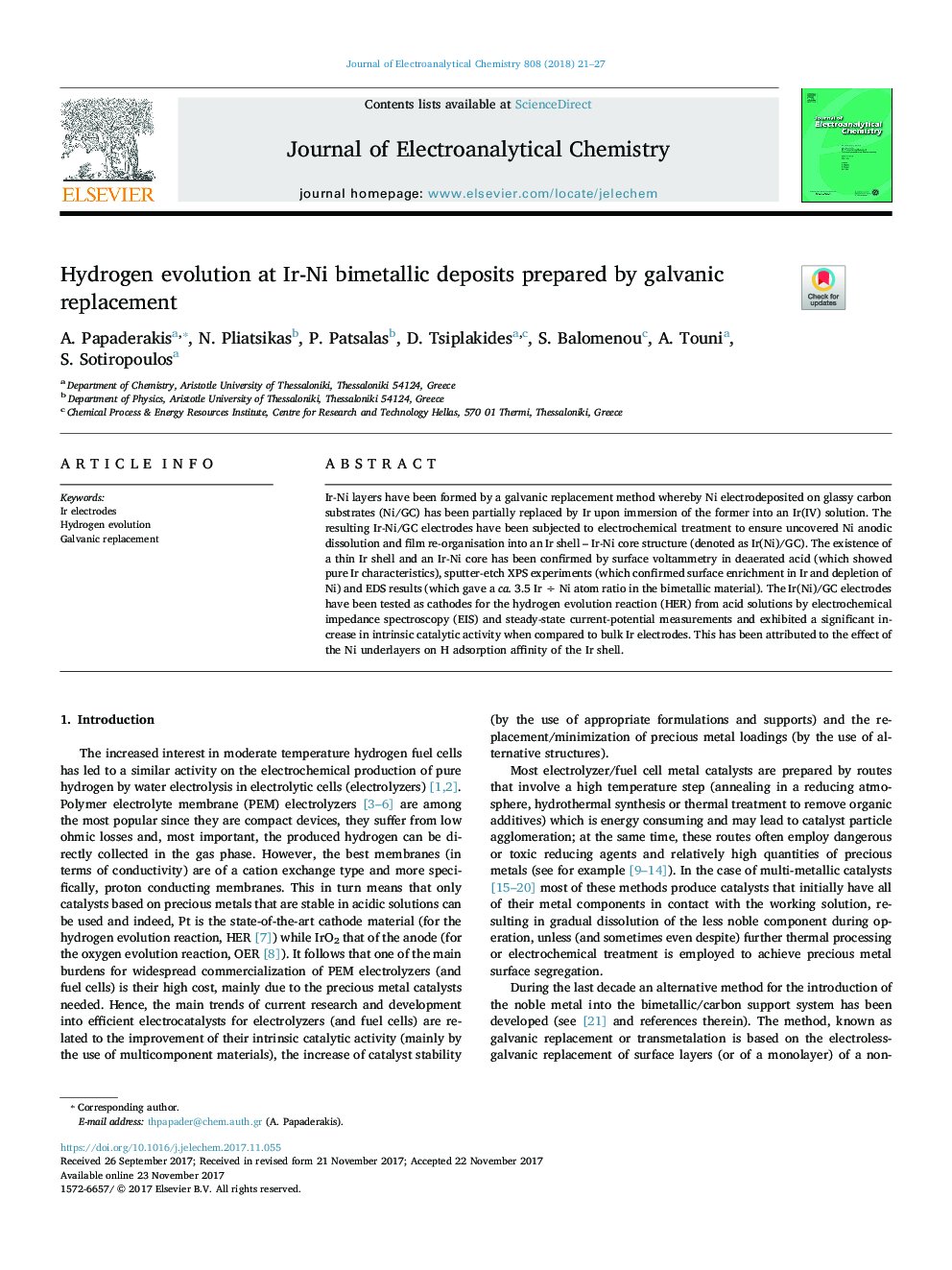| Article ID | Journal | Published Year | Pages | File Type |
|---|---|---|---|---|
| 6662174 | Journal of Electroanalytical Chemistry | 2018 | 7 Pages |
Abstract
Ir-Ni layers have been formed by a galvanic replacement method whereby Ni electrodeposited on glassy carbon substrates (Ni/GC) has been partially replaced by Ir upon immersion of the former into an Ir(IV) solution. The resulting Ir-Ni/GC electrodes have been subjected to electrochemical treatment to ensure uncovered Ni anodic dissolution and film re-organisation into an Ir shell - Ir-Ni core structure (denoted as Ir(Ni)/GC). The existence of a thin Ir shell and an Ir-Ni core has been confirmed by surface voltammetry in deaerated acid (which showed pure Ir characteristics), sputter-etch XPS experiments (which confirmed surface enrichment in Ir and depletion of Ni) and EDS results (which gave a ca. 3.5 Ir ÷ Ni atom ratio in the bimetallic material). The Ir(Ni)/GC electrodes have been tested as cathodes for the hydrogen evolution reaction (HER) from acid solutions by electrochemical impedance spectroscopy (EIS) and steady-state current-potential measurements and exhibited a significant increase in intrinsic catalytic activity when compared to bulk Ir electrodes. This has been attributed to the effect of the Ni underlayers on H adsorption affinity of the Ir shell.
Related Topics
Physical Sciences and Engineering
Chemical Engineering
Chemical Engineering (General)
Authors
A. Papaderakis, N. Pliatsikas, P. Patsalas, D. Tsiplakides, S. Balomenou, A. Touni, S. Sotiropoulos,
